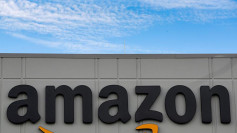While OpenAI has been hailed as the vanguard of the Fourth Industrial Revolution and the torchbearer for the AI wave, concerns over its financial sustainability have started to emerge. In the last six months, OpenAI's achievements and potential have kept both the tech community and the investor circles buzzing, even driving tech stocks to rally and diverting narratives from an interest rate-induced recession to a bullish surge.
However, monetizing AI technology remains a challenge, and OpenAI still heavily depends on investments from partners like Microsoft to maintain operational stability. As reported by Analytics India Magazine, OpenAI recorded losses of $540 million in 2022. And with ongoing projects like the development of GPT-5, these losses are projected to continue to grow.
The magazine even suggests that, if trends persist, OpenAI could be insolvent by the end of 2024.
Indian Media's Warning: OpenAI Could Be Broke by Next Year's End
Analytics India noted that merely operating ChatGPT costs up to $700,000 daily. Reports from May revealed that OpenAI's annual losses in 2022 doubled from the previous year, hitting the $540 million mark. Furthermore, the number of users for its products has been on a consistent decline, posing even more challenges for its monetization strategies. Since May, ChatGPT user counts have decreased for two consecutive months. Data from SimilarWeb indicated a 12% drop in July 2023, descending from 1.7 billion to 1.5 billion users.
Open source models in the current market are also reportedly poaching potential OpenAI customers. For instance, Meta's Llama 2 performs comparably to ChatGPT and can meet many companies' operational needs. Given the cost advantages of open-source models, budget-conscious organizations might find them more appealing than OpenAI's pricier offerings.
The magazine also highlighted the ongoing GPU shortage, which affects OpenAI even with Microsoft Azure's backing. With GPT-5's development consuming a considerable amount of computational power, the computational resources for regular users to operate ChatGPT may be diminishing. This could explain recent social media claims that "GPT is getting dumber."
Elon Musk's X.ai is also poised to be a strong competitor for OpenAI. The magazine believes Musk's commitment to an unbiased AI system with TruthGPT will attract many users. Moreover, Musk has reportedly placed orders for 10,000 NVIDIA GPUs.
The Clear Direction of AI
While Analytics India predicts a possible bankruptcy for OpenAI by 2024's end, it hasn't offered substantial evidence to back this claim.
OpenAI projects revenues of $200 million in 2023, aiming for $1 billion in 2024. More significantly, the company holds an investment of over $10 billion from Microsoft.
According to the magazine's estimates:
- OpenAI's daily operational costs are $700,000, amounting to $21 million monthly or $2.5 billion annually.
- OpenAI has received over $11 billion in financing from Microsoft.
- At an annual burn rate of $2.5 billion, even if OpenAI earns nothing, Microsoft's investment alone could keep it afloat for 40 years.
- Even considering tenfold increased operational costs due to GPT-5, OpenAI would still have around four years before depleting its current funds.
Regardless of the calculations, the idea of "OpenAI going broke next year" seems far-fetched.
More importantly, recent moves by global tech companies demonstrate that AI isn't just a buzzword. It might be one of the most significant industrial revolutions, fundamentally changing how we work.
Guo Mingchi, an analyst at Tianfeng International Securities, tweeted on August 14 that rumors of OpenAI's bankruptcy are baseless. He emphasized that the clear direction is towards AI/AIGC. However, if sustainable profit-making business models for AI/AIGC aren't established, investments in AI/AIGC could slow. One key indicator to watch would be Microsoft's capital expenditure forecasts for AI/AIGC in the next two quarters and related business profitability.





